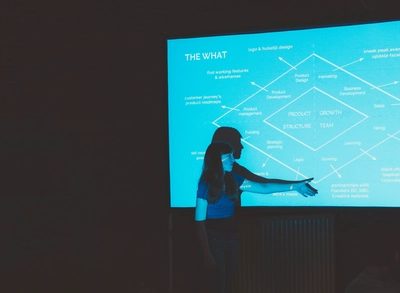
Please install a more recent version of your browser.
6 June 2017
4 minutes read
The second edition of the Let’s Think Design conference, which took place in Antwerp last Thursday, focused on the future of design thinking through a number of lectures and workshops. Will it turn out within a couple of years that it was all just a fad with a limited shelf life? Or is design thinking on the contrary growing into a broadly supported movement, an implicit attitude with which we can continue to select and tackle the right problems in the most appropriate manner? The answer to the latter question is an unambiguous, yes!
“Design thinking is essentially a human-centered innovation process that emphasizes observation, collaboration, fast learning, visualization of ideas, rapid concept prototyping and concurrent business analysis, which ultimately influences innovation and business strategy. The objective is to involve consumers, designers and business people in an integrative process, which can be applied to product, service and business design.’’
Nathan Waterhouse, co-founder of OpenIDEO, notes with justification that the growing impact of design thinking is above all being hampered by a series of hard-to-detect biases. It’s not so much about bias in relation to the principles and objectives of design thinking itself, but rather cultural and emotional obstacles that can derail any form of cooperation.
A designer will have to be on the lookout for these hidden traps and be able to come up with efficient solutions to tackle them. Nathan helped the audience get a great head start by explaining his approach. From the get go, he asks all involved about the way in which they think they can fail in this quest for innovation. By so doing he lays bare the cooperation process from day one and makes all participants responsible for getting rid of their biases.
“To be truly innovative, you don’t just have to be constantly generating new insights and ideas, but also making them happen. To sustain that, we believe you need to build a culture to support it in the long term. The stronger your culture, the stronger your innovation capacity becomes.”
Oli Shaw, global service design & creative director at Designit, picks up on this thread later on in his lecture when he says that the development of design thinking projects within organisations and companies actually comes down to designing on a basis of uncertainties.
According to Oli Shaw, design thinking methods always call the whole system into question. They have an impact not only on all structural departments such as production, marketing, accounting and customer relations, but also on attitudes such as efficiency, commitment and motivation. Even external companies partnering in the project won’t be able to escape. A designer takes on the role of cartographer in this whirlpool and, within this total organisational revolution, sketches out the path that everyone must follow. It’s a step that leads to a design-driven culture in all these organisations and companies.
“When you let go structure and chaos kicks in, the design process helps to make thing concrete and manageable.”
If there were people present in the audience who had their doubts about a glorious future for design thinking, the American innovative thinker and designer Thomas Lockwood (Lockwood Resource) whisked away all concerns. Using a highly analytical survey, he came to a resounding and well-founded ‘Yes’ to the question of whether there is a future for design thinking. A ‘Yes’ that he has incidentally repeated at least twenty times.
His enthusiasm is mainly based on his premise that you don’t need designers to do design thinking. According to Thomas Lockwood, people are driven by three basic requirements: the need to participate, to acquire knowledge and to be able to freely express themselves. Design thinking opens the door for anyone to draw on these three motives during an improvement process for any purpose whatsoever.

Thomas Lockwood © Jana Germanus
In addition to design thinking being something that anyone can do, that it addresses basic human needs, and that it can serve any purpose whatsoever, design thinking will also flourish in the future because it simply just works. It’s not only efficient within organisational processes, it’s also the case that customers or end users are often the ones who feel the impact most keenly. As a result, they also spur other companies on to operate in this way.
However, Thomas Lockwood also points out that it’s not smooth sailing for design thinking quite yet. There are still some dark clouds looming in the horizon that urgently need to be dealt with. The biggest threat is contained in the curriculum of our educational institutions, or to be more accurate the lack of sound and integrated design thinking courses. The result is that a whole generation of creative people are still graduating without a thorough knowledge of design thinking and the fact that it can be used so universally.
“In the end, the goal is to not just solve problems, but to solve the right problems. A design thinking approach can help to remove constraints and enable breakthrough ideas to see the light of day.”
However, this gap still present in education is being tackled by the many initiatives being developed by design studios and cross-sectoral organisations. The break-out sessions during Let’s Think Design made this very clear.

Sofie Vandenhende van Wonderland © Jana Germanus
The team behind Wonderland is a great example. The agency has developed a multifunctional tool with which start-ups and more established companies alike can learn to estimate the impact of design thinking on their own organisation. With the start-ups, they are going one step further: for a certain period, one of the Wonderland people will join the start-up team to generate a design thinking culture within the organisation.
Let’s Think Design was organised by Creative Network in association with Wonderland and Made.
Cookies saved